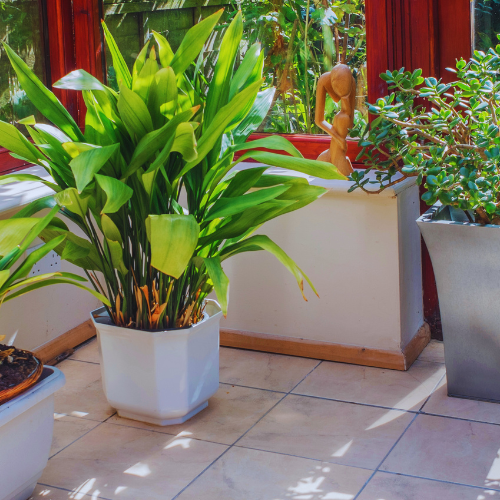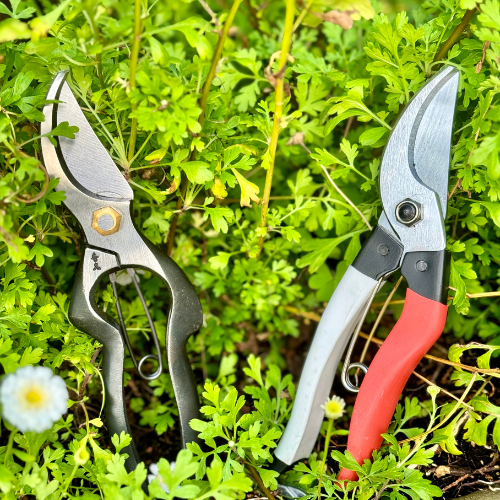Blog
Prepping Your Garden for Frost
Date Posted: 20 October 2024As winter draws near, it's important to start preparing your garden for the challenges that frost will bring. Frost can harm plants, damage soil, and make maintaining a healthy garden difficult if you aren't prepared. By taking a few key steps now, you can help protect your plants and ensure your garden thrives once spring arrives.
Here’s a step-by-step guide to frost-proofing your garden.
1. Insulate Vulnerable Plants
Start by insulating the roots of your plants, which are the most susceptible to frost damage. Apply a layer of mulch, straw, or compost around the base of perennials, shrubs, and newly planted specimens. This will regulate soil temperature and prevent the ground from freezing, protecting the root systems. Be sure to apply the mulch thickly enough to create an insulating barrier but avoid piling it directly against plant stems, which can lead to rot.
2. Watering Before a Frost
Although it may seem counterintuitive, watering your garden before frost can actually help protect plants. Moist soil retains heat better than dry soil, creating a buffer against freezing temperatures. The day before frost is expected, water your garden deeply, focusing on more vulnerable plants, but avoid waterlogging the soil. This is especially helpful in autumn, as the soil tends to dry out faster.

3. Cover Delicate Plants
Use protective covers like garden fleece, burlap, or frost blankets to shield delicate plants from frost. These covers trap heat close to the plants, helping to reduce frost damage. Remember to anchor the covers securely so they don’t blow away in strong winds. Focus on plants that are particularly frost-sensitive, such as tender herbs, young seedlings, or vegetables that haven’t fully matured.
4. Utilise Cloches for Smaller Plants
For individual or smaller plants, cloches (bell-shaped covers) can provide excellent frost protection. You can buy ready-made cloches, or you can fashion your own using recycled materials such as plastic bottles or glass jars. These cloches create a mini greenhouse effect, trapping heat and protecting your plants from sudden temperature drops.
5. Move Potted Plants Indoors
Plants in pots are especially vulnerable to frost because their roots are more exposed to cold air. Move potted plants indoors or into a sheltered area like a greenhouse, garage, or a cold frame. If it’s not possible to move larger pots, wrap them in bubble wrap or blankets to provide additional insulation for the roots.

6. Aerate and Protect Your Lawn
Frost can cause significant damage to your lawn, particularly if the soil becomes compacted. Before frost sets in, aerate your lawn to improve soil drainage and allow air and nutrients to reach the roots more easily. Mow your lawn one last time before the cold weather arrives, but avoid cutting it too short, which could weaken the grass. A final top-dressing of compost or organic material can provide additional insulation and protection against frost damage.
7. Cover Bare Soil
Bare soil is highly susceptible to frost, which can disrupt the structure of the soil and affect its fertility. Cover any empty beds with a thick layer of mulch, compost, or even a cover crop. This will help protect the soil from freezing, reduce moisture loss, and prevent nutrient leaching during winter rains. Additionally, this layer will decompose over the winter, enriching the soil for the next planting season.
Tools for the Job
To make your garden frost preparation easier, Japeto offers a range of high-quality, precision tools that can help with each step of the process. Here are four essential tools that will make the job smoother and more effective:
-
Japanese Garden Secateurs – Ideal for pruning back perennials and delicate shrubs before covering them with fleece. These secateurs offer precise cuts without damaging plants, ensuring they are trimmed and ready to face winter
-
Hori Hori Knife – This versatile tool is perfect for digging and preparing beds for mulch or protective coverings. It’s also useful for planting new bulbs in autumn as it functions as both a trowel and a knife
-
Garden Fork – Aerating your lawn and soil before frost is critical for promoting drainage and preventing compaction. Japeto’s garden fork allows you to loosen the soil without damaging roots, making it an essential part of winter preparation
-
Japanese Garden Shears – For cutting back larger hedges and branches, these long-handled shears provide the reach and cutting power you need. They are perfect for trimming back plants that are too large for standard secateurs

With the right tools in hand, you’ll be fully equipped to prepare your garden for the colder months ahead, ensuring it stays healthy and ready to bloom come spring.
By following these steps and using the right tools, you can protect your garden from the harsh effects of frost and ensure it emerges healthy and vibrant in the spring. Preparing your garden now by insulating plants, covering exposed soil, and protecting delicate specimens is essential for winter survival.
To make your winter gardening tasks easier, shop Japeto’s full range of high-quality tools designed to help you tackle any challenge your garden may face this season.
